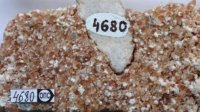
|
Nowadays, we take the presence of oxygen for granted. Indeed without oxygen, life on Earth as we know it would not exist. Yet if oxygen is so essential to life, we might ask why the time when oxygen first appeared in the atmosphere is often referred to as the Oxygen Catastrophe. |
|
|
Why? Because for a large part of the Earth's history, our planet was free of the gas. When oxygen appeared it probably wiped out any life forms which existed at the time. These life-forms were 'obligate anaerobic organisms' and by definition free oxygen is toxic to them. ('Obligate anaerobic' defines microorganisms which are killed in a normal atmosphere of 21% oxygen.) Therefore as the planet became oxygenated, the rising concentrations may have destroyed most life-forms adapted to living without it. Ironically this included species of the oceanic cyanobacteria which were the very organism responsible for the first photosynthesis and oxygen production. The biologically-induced appearance of dioxide (O2) also contributed to changing the Earth's surface. One of the early changes was to iron molecules in seawater and on the ancient ocean floor. This iron trapped the early oxygen as it appeared, turning it to iron oxide (rust). Over many millions of years these processes of precipitating silica and iron oxide were repeated over and over again giving rise to banded iron formations (see: Septermber 2006 Editorial). The Great Oxygen Event started when these oxygen sinks became saturated. At this point oxygen produced by the cyanobacteria was free to escape into the atmosphere.This major change in atmospheric and ocean chemistry occurred in the Paleoproterozoic era (2.5 to 1.6 billion years ago). While the end date of the oxygenation process is reasonably well-established, there is still ongoing debate of when the first free O2 appeared on Earth and how quickly it built up. Some scientists believe that the process started early. Studies published in Nature Geoscience in 2009 argue that oxygen was present as early as 3.46 billion years ago. They looked at hematite-rich chert (chert is a brittle sedimentary rock) obtained from the a deep drill core from the Pilbara Craton of Western Australia. Hematite is produced through oxidation, so dating ancient sources of hematite can be used to discover when oxygen was present on Earth. (see: April 2009 Editorial) More recent studies have looked at the oxidation of manganese. Creating manganese (Mn) oxide requires substantial free oxygen concentrations. Therefore any indication that Mn oxides were present in ancient environments would imply that oxygenic photosynthesis was ongoing. Mn oxides are not commonly preserved in ancient rocks, but another recent study showed there there is a large fractionation of molybdenum (Mo) isotopes associated with the sorption of Mo onto Mn oxides that would be retained. That is, when manganese oxide reacted with molybdenum on rocks, the chemical reaction left traces which could be later discovered. This particular study reported Mo isotopes from rocks of the Sinqeni Formation, Pongola Supergroup, South Africa. These rocks formed no less than 2.95 billion years ago in a nearshore setting. The Mo isotopic signature is consistent with interaction with Mn oxides. The authors argue that oxygen produced through oxygenic photosynthesis began to accumulate in shallow marine settings at least half a billion years before the accumulation of significant levels of atmospheric oxygen.(Nature Geoscience, 2014) Another unsolved question is how quickly the ancient Earth's atmosphere became oxygenated. In one of the most recent studies, an international team of researchers analysed a sample of 2-billion-year-old salt rock obtained from a geological drill core in Russian Karelia. These salt crystals were left behind when ancient seawater evaporated. They gave geologists new clues to the composition of the oceans and atmosphere on Earth more than 2 billion years ago. This latest study describes the sediment, mineral, and geochemical findings from these 2-billion-year-old rocks, which formed in a band approximately 800 meters thick. The analysed samples consisted of halite (a rock salt chemically identical to table salt or sodium chloride) and other salts: anhydrite-magnesite and dolomite-magnesite. The researchers found that the mineral deposits contained a large amount of a component of seawater known as sulfate, which is created when sulfur reacts with oxygen. The concentration of sulfate was more than 20% higher than the modern ocean-atmosphere oxidizing capacity, which suggests that substantial amounts of surface oxidant accumulated during this critical transition period of Earth’s oxygenation. Clara Blättler, a postdoctoral research fellow in the Department of Geosciences at Princeton, and first author of this study, commented that the oxygen accumulation was more like a firehose than a trickle. It appears that the major change in the production of oxygen was very sudden.(Science, 2018) Credit: Photo by Aivo Lepland, Geological Survey of Norway; courtesy of Science/AAAS Journal Reference: | |
| _______________________________ | ||||
| Home | | | Shopping | | | Database |
© Biscuit Software 2004-2017
All rights reserved